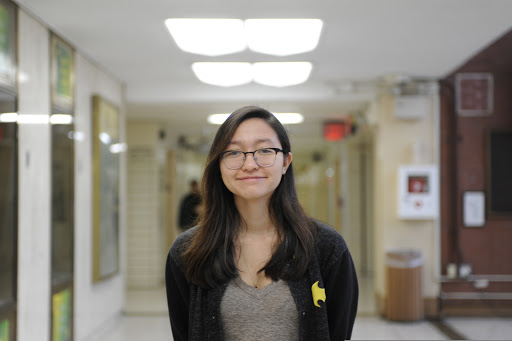Is It An Alien This Time?
Another interstellar object enters the Solar System

The 2I/Borisov comet is little known to the public. Scientists have yet to know more about the object itself, and students at Bronx Science wish to learn more about interstellar objects. Katherine Blazeby ‘20 is amongst those curious students who wishes to gain insight into interstellar objects.
The first interstellar object was detected on Oct 19th, 2017. It was dubbed ‘Oumuamua’ after the Hawaiian word for Scout. Following its predecessor, a second object was recently detected entering our solar system from distant galaxies.
The object, C/2019 Q4 (Borisov), better known as 2I/Borisov, was discovered on August 30th, 2019 by Gennady Borisov. It was observed by the MARGO observatory in Nauchnij, Crimea.
After the first fly-by of the comet Oumuamua, scientists noticed that the features of this comet were unlike many other objects in our solar system. It is often rare to find interstellar objects in our solar system, so finding this was a great success. Now scientists are aiming their telescopes at 2I/Borisov.
Current observations show that the comet is heading towards the sun. Now that the comet is in our solar system, scientists are able to collect data. The comet is reported to be “fuzzy-like,” causing it to produce clouds of dust and other particles as it is heated up by the sun. A team of scientists at the University of Hawaii observed the comet’s nucleus to be around 1.2 to 10 miles in diameter.
“They remind us that there’s more outside our own little solar system, and it’s so interesting how they could give us insight into what lies beyond the limitations of technology today. It’ll be so exciting to keep up with the advancement of our knowledge of astronomy, if we are able to intercept Borisov,” said Katherine Blazeby ‘20.
Scientists hope to continue their observations while the comet passes through the ecliptic plane, the plane in which the planets orbit the sun. Traveling at 93,000 mi/h, 2I/Borisov is expected to pass through the ecliptic plane by October 26th, 2019. Currently, it is approaching the sun, and is expected to reach the perihelion (closest point to the sun) on December 8th, 2019. During this fly-by, the comet will be observed in greater detail, providing more information on its features and other objects in interstellar galaxies.
Astronomy at Bronx Science keeps students updated on what happens outside of their world. Curious students take this course as an elective or their lab science. Astronomy gives students an opportunity to explore the universe more than what meets the eye. “I think that the stars are super pretty. I want to know more about the constellations in the sky, the planets that are in our solar system, and galaxies ahead of us. I really enjoy learning about the special phenomena that occur around our planet, like getting to know the moon phases and the sun’s effect on our seasons. I haven’t learned a lot yet, but I hope I’ll be able to learn a lot more by the end of this year,” said Amanda Francisco ‘20.
2I/Borisov is also an object fueling not only scientist’s curiosity, but also that of intrigued students. “I know there’s very little known about them since we hardly have the technology to go there ourselves. However, C/2019 Q4 provides a golden opportunity to greatly expand our knowledge of them and interstellar travel in general,” said Katherine Blazeby ‘20. “They remind us that there’s more outside our own little solar system, and it’s so interesting how they could give us insight into what lies beyond the limitations of technology today. It’ll be so exciting to keep up with the advancement of our knowledge of astronomy, if we are able to intercept Borisov.”
Oumuamua was a wonder that passed by our solar system in 2017, and now 2I/Borisov succeeded it. These objects have allowed scientists to learn more about an unreachable part of space without ever having to travel there ourselves. “Investigating interstellar objects from a close distance would provide us with unique data about other star systems without actually flying to them,” said Dr. Andreas M. Hein, one of the co-authors on a recent study. “Interstellar objects are cool, as it’s a bit like: If you can’t go to the mountain, let the mountain come to you.”

Amanda Franciso ‘20 is taking Astronomy this year to learn more about celestial bodies in the universe.“I find that pictures of galaxies I see online are so nice and beautiful, and so I want to know more about why they are so pretty in the first place,” said Francisco
Afifa Areya is the Chief Graphic Designer and a Staff Reporter of ‘The Science Survey.’ She finds that journalistic writing gives her the ability...
